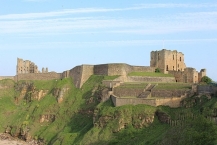Tynemouth Castle and Priory
Sehenswürdigkeiten
Erstellt am 13.12.2020,
zuletzt geändert von biroto-Redaktion am 13.12.2020
Radwege und Fahrrad-Touren in der Nähe
| Name/Bezeichnung | Typ | km zur Strecke |
|---|---|---|
Route | 0,1 km | |
Route | 0,1 km | |
Route | 0,2 km | |
Route | 1,7 km |
![]()
Bitte warten - Kartendaten werden geladen
Art der Sehenswürdigkeit
Burg/Schloss
Name u. Anschrift
Tynemouth Castle and Priory
GB-NE30 4DB North Tyneside
GEO-Daten
GEO-Koordinaten
55.01∎∎∎∎ -1.41∎∎∎∎
Höhe
31 m
Kommunikation
Internet
∎∎∎.∎∎∎∎∎∎∎-∎∎∎∎∎∎∎∎.∎∎∎.∎∎/∎∎∎∎∎/∎∎∎∎∎∎/∎∎∎∎∎∎∎∎∎-∎∎∎∎∎∎-∎∎∎-∎∎∎∎∎∎/
Informationen zu Urheber-Rechten | |
|---|---|
Rechte-Inhaber | |
Rechte-Ausprägung / Lizenz | by-sa: CREATIVE COMMONS Namensnennung, Weitergabe unter gleichen Bedingungen |
Link zur Rechtebeschreibung | |
Bild übernommen aus | https://commons.wikimedia.org/wiki/File:Prieuré_Château_Tynemouth_North_Tyneside_19.jpg |
Bild hochgeladen | durch biroto-Redaktion am 13.12.2020
|
Informationen zu Urheber-Rechten | |
|---|---|
Rechte-Inhaber | Rab Lawrence |
Rechte-Ausprägung / Lizenz | by: CREATIVE COMMONS Namensnennung |
Link zur Rechtebeschreibung | |
Bild übernommen aus | |
Bild hochgeladen | durch biroto-Redaktion am 13.12.2020
|
Informationen zu Urheber-Rechten | |
|---|---|
Rechte-Inhaber | https://commons.wikimedia.org/w/index.php?title=User:Hadrianus1959 |
Rechte-Ausprägung / Lizenz | by-sa: CREATIVE COMMONS Namensnennung, Weitergabe unter gleichen Bedingungen |
Link zur Rechtebeschreibung | |
Bild übernommen aus | https://commons.wikimedia.org/wiki/File:Tynemouth_Priory_Church.jpg |
Bild hochgeladen | durch biroto-Redaktion am 13.12.2020
|
Tynemouth Castle is located on a rocky headland (known as Pen Bal Crag), overlooking Tynemouth Pier. The moated castle-towers, gatehouse and keep are combined with the ruins of the Benedictine priory where early kings of Northumbria were buried. The coat of arms of the town of Tynemouth still includes three crowns commemorating the tradition that the Priory had been the burial place for three kings.
Origins of the Priory
Little is known of the early history of the site. Some Roman stones have been found there, but there is no definite evidence that it was occupied by the Romans. The Priory was founded early in the 7th century, perhaps by Edwin of Northumbria. In 651 Oswin, king of Deira was murdered by the soldiers of King Oswiu of Bernicia, and subsequently his body was brought to Tynemouth for burial.[1] He became St Oswin and his burial place became a shrine visited by pilgrims. He was the first of the three kings buried at Tynemouth.
In 792 Osred II, who had been king of Northumbria from 789 to 790 and then deposed, was murdered. He also was buried at Tynemouth Priory.[1] Osred was the second of the three kings buried at Tynemouth. The third king to be buried at Tynemouth was Malcolm III, king of Scotland, who was killed at the Battle of Alnwick in 1093. The king's body was sent north for reburial, in the reign of his son Alexander I, at Dunfermline Abbey, or possibly Iona.
The castle
It is believed that at the time of Robert Mowbray's capture in 1095 there was a castle on the site consisting of earthen ramparts and a wooden stockade. In 1296 the prior of Tynemouth was granted royal permission to surround the monastery with walls of stone, which he did. In 1390 a gatehouse and barbican were added on the landward side of the castle. Much remains of the priory structure as well as the castle gatehouse and walls which are 3200 feet (975 m) in length. The promontory was originally completely enclosed by a curtain wall and towers, but the north and east walls fell into the sea, and most of the south wall was demolished; the west wall, the gatehouse and a section of the south wall (with original wall walk) remain in good condition.
Informationen zu Urheber-Rechten | |
|---|---|
Rechte-Ausprägung / Lizenz | by-sa: CREATIVE COMMONS Namensnennung, Weitergabe unter gleichen Bedingungen |
Link zur Rechtebeschreibung | |
Text(e) übernommen von: |
Wikipedia contributors, 'Tynemouth Castle and Priory', Wikipedia, The Free Encyclopedia, 30 October 2020, 17:41 UTC, <https://en.wikipedia.org/w/index.php?title=Tynemouth_Castle_and_Priory&oldid=986245584> [accessed 13 December 2020] |
übernommen / bearbeitet am | 13.12.2020
|
übernommen / bearbeitet durch |
|
Radwege und Fahrrad-Touren in der Nähe
| Name/Bezeichnung | Typ | km zur Strecke |
|---|---|---|
Route | 0,1 km | |
Route | 0,1 km | |
Route | 0,2 km | |
Route | 1,7 km |
Erstellt am 13.12.2020,
zuletzt geändert von biroto-Redaktion am 13.12.2020



